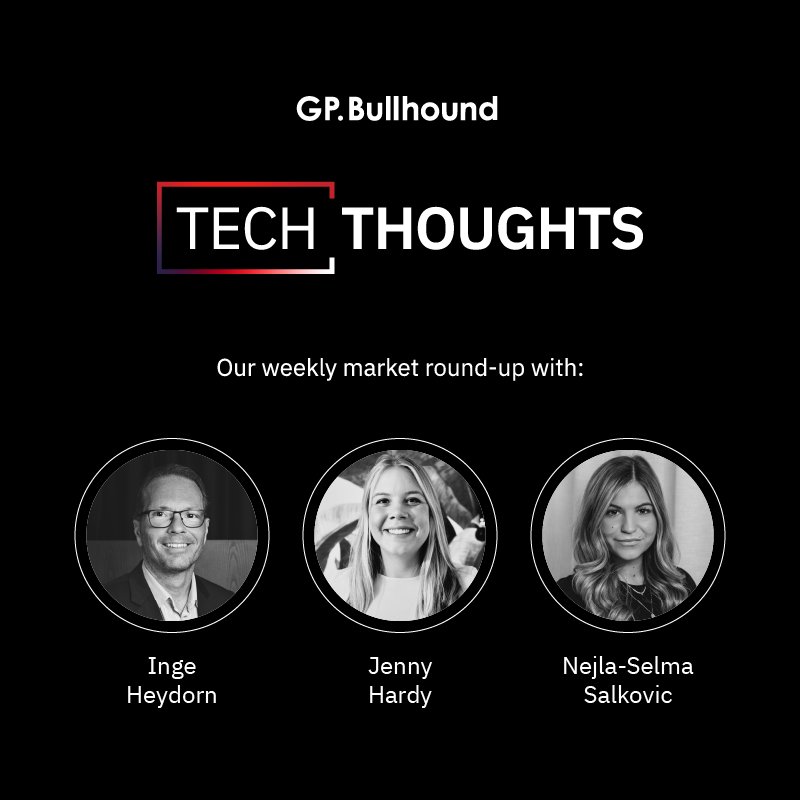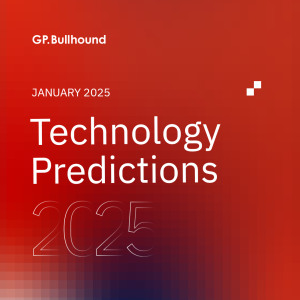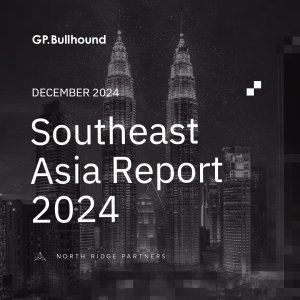Tech Thoughts Newsletter – 4 August 2023.

Market: Macro back in focus with the big event of the week – the US debt downgrade – hurting markets and tech.
Portfolio: We made no major changes in the portfolio this week.
AMD making the most of Nvidia’s current supply constraints and becoming a credible player in AI:
- AMD (owned) reported a decent beat on the top line and EPS, and though the Q3 guide was a little light, more important for us was the strong commentary around a Q4 launch of its AI accelerators.
- They showed another quarter of share gains over Intel – its design and manufacturing (via TSMC) leadership over Intel continues, and that’s even before designs start to shift to TSMC’s 5nm node this later this year – when the performance gap should increase further.
- The next big outstanding question for AMD was whether they can be a credible competitor to Nvidia in AI workloads.
- We’ve commented before that there are lots of reasons why AI players will not want to be tied into Nvidia – everyone is motivated to look for a credible alternative so as not to be tied to one very powerful supplier.
- More importantly, as we’ve noted before, Nvidia is currently supply constrained – and so there are many customers struggling to get their hands on Nvidia H100 chips. AMD is the most credible alternative here, with its MI300X GPU chip.
- The big positive in the release was CEO Lisa Su’s comments that they are “on track to launch and ramp production of MI300 accelerators in the fourth quarter”.
- To the extent that AMD can launch its MI300 GPU alternative to Nvidia in Q4, while Nvidia is currently supply constrained, would be very positive indeed in establishing them as a very credible alternative to Nvidia in AI workloads. It means AMD could benefit significantly alongside Nvidia in the initial AI infrastructure build-out, as well as longer-term in the AI inference market.
- Elsewhere, like Intel, the stronger-than-expected (though still weak) client segment revenue reflects a PC market that’s stabilising – we know monthly notebook shipments have been better and we’re now in a much more normal inventory environment in the PC space.
Portfolio view: We own AMD (and Nvidia) and continue to think that much of the value around AI will accrue in the short to medium term to the AI infrastructure and semiconductor enablers. Indeed, the value of AI semis was highlighted this week in a slightly unusual move where cloud provider Coreweave raised $2.3bn debt collateralised by Nvidia chips.
We also see AMD as a structural share gainer over Intel in “traditional” CPU-based servers.
Auto strength continues, though moving back to more normal supply/demand dynamics is creating short-term volatility
- Infineon (owned) reported a decent Q3 though Q4 guidance was slightly disappointing and the key negative was margins going backwards.
- Auto and industrial demand remains strong (though fair to say we’re going back to a more “normalised” supply environment after the very tight supply we’ve seen in autos for the last 2 years following the pandemic).
- It’s becoming clear that outside of auto, industrial and AI, semis demand is seeing a delayed recovery (for Infineon that’s impacting in particular its PSS and CSS businesses).
- The “more normal” supply environment in autos means that there are no longer premium fees being paid for additional supply, which means the extraordinary margins Infineon was seeing are now fading away.
- The other big news was announcing a major expansion of their SiC business, with the original €2bn investment in Malaysia (for both SiC and GaN) going to €7bn, supported by design wins of €5bn across auto and industrial.
- Positives: fundamentally the auto content gain story hasn’t changed, with Infineon the leading player in power and as we see the biggest beneficiary in the shift to EV; the pricing message was very robust (that was the big debate for the market last quarter), with pricing “firm” or even going higher.
- Negatives: we wonder why, given still strong auto builds and a robust content story, Infineon isn’t guiding that business to grow more sequentially in Q4, while peers have guided for clearer growth. Auto isn’t a business where market share shifts in quarters (because design-ins are so long – it’s one of the reasons we like it vs. the old smartphone world), so one explanation is that there are still some premium fees remaining that are now rolling off, another is that it’s just conservatism from management.
- The SiC investment is coming with prepaid deals and design wins. We know SiC is an area of growth in auto (see below too from On Semi) where demand significantly exceeds supply, and we view Infineon’s increased exposure as a positive in the structural growth story.
- On Semi, which also sells into the auto and industrial space, reported strong results and guidance and strong Silicon Carbide demand.
- Their SiC ramp and demand are strong, growing 4x yr/yr driven by both EV and energy infrastructure (areas like solar inverters and energy storage inverters).
- Supportive industry dynamics, like long-term supply agreements continue – They have $3bn of long-term signed agreements in SiC. That speaks to broadly healthier dynamics for the whole semis space, which we think can have a positive impact on short-term visibility.
- Microchip reported inline results though commented it sees weakness in China (and still no signs of recovery) and initial weakness in the auto and industrial segments (counter to Infineon’s comments above), with requests to also push out their backlog as customers try to rebalance inventory. The comments on auto and industrial should be noted though we would also point out that vs. Infineon and NXP, Microchip doesn’t obviously benefit from the ICE-> EV shift in terms of semi-content, and its components are much more dependent on headline auto volumes.
Portfolio view: We own Infineon and NXP in the auto space, given the structural content increase in semis in the move to EV. While the market reacted negatively to Infineon’s damp Q4 guide, we still think auto exposure is attractive within the component space.
On its announced €5bn investment, we believe the long-term demand environment for SiC should support a good return on invested capital for Infineon. It’s currently trading on <14x this year’s earnings which we think is too cheap given the long-term secular growth.
It’s fair to say that ex-auto and industrial the outlook in semis has weakened over the last three months – the demand companies expected to come through in the second half is delayed, so any sequential improvement is really driven by improving inventories, and in some cases (see below on Android) that inventory correction still has further to go.
Android still in the doldrums, with recovery delayed again; PC stabilising
- Qualcomm reported damp results and a damp Q4 guide. It’s one of the best reads to the smartphone space and the short story is that things are still not getting better in the Android market, in particular, there seems to be no meaningful recovery in demand in China, with the inventory correction lasting through to the end of the year.
- For Qualcomm there are more moving parts in terms of share gains and Apple ramps/excess inventories, which might turn a cyclical downturn into more of a structural issue for them specifically, but for us, the key take is that any Android recovery is delayed until Q1 next year.
- Amkor also commented that they expected Android weakness to remain into the second half of the year, with still higher than seasonal inventory, while they expect that the iOS shipments they expected to be in line with prior seasonal moves.
- Qorvo too spoke to the same, with their better iPhone content as an offset to a weaker Android market. It has reduced its Android channel inventories by 20% in the June quarter, after more than 20% reductions in each of the prior two quarters – which shows just how elevated Android inventory levels had reached.
- There’s slightly better commentary overall in the PC market with AMD (after Intel last week) also reflecting stabilising demand in their client business, and Western Digital too
Portfolio view: as above it feels fair to say that in ex the secular stories in auto and AI, the outlook for semis has weakened over the past quarter. While inventories are more normal generally, there are clearly pockets where inventories are much more elevated than we would have expected, dragging out the weakness into year-end. In the portfolio, we try to avoid any direct exposure to consumers and Android, though as above with Infineon, it’s very rare in semis to be able to avoid it completely.
Shifting compute priorities and shifting budgets creating winners and losers in the server space…
- Arista Networks (owned – small position) beat and raised guidance on the back of strong hyper-scaler demand – as AI backend requires increased networking requirements, and more broadly as cloud infrastructure requirements increase – seeing 100 gigabit migration in the enterprise, 200 and 400 gigabit migration in the cloud and 400 going to 800 gigabit for AI workloads.
- We’ve commented before that increased networking requirements around cloud and AI is a slightly forgotten beneficiary of AI – the bandwidth and performance required, as well as a likely faster refresh rate of technology.
- As we said last week with Intel saying that they were losing out to AI GPU spend, there are clearly near-term wallet share shifts in AI, and Western Digital looks to be a loser in its storage business, with AI having “some disruptions on the business in the near term”.
Portfolio view: the way we often think about investing and the portfolio is that there is often one defined budget for companies to spend, and so when you get a new innovation like AI, there will be winners and losers, which we try to be on the right side of.
AI workloads starting to offset cloud optimisation trends?
- Amazon (owned) reported a good beat on the top and bottom lines and guided this quarter (both revenues and operating income ahead), with both AWS and its retail business doing well.
- The key AWS revenue number +12% yr/yr, beating consensus (and the guide) of +10%. It’s still slowing (it was 16% last quarter) but the second derivative is slowing and on the call, management noted that while we were still seeing optimisation, more customers were starting to now bring new workloads (including AI) to the cloud.
- Most interesting for us on the call were its comments on chips and capex – they noted “supply has been scarce” for Nvidia GPUs (Amazon have their own in-house Trainium chip). And on capex “I would like to have the challenge of having to spend a lot more capital in generative AI because it will mean that customers are having success”, and indeed capex around AWS is going higher this year “including additional investment-related to generative AI and large language models”.
- Worth noting (and putting in the context of the growth rates we’ve seen elsewhere in the digital advertising space) Amazon’s advertising business is over $10bn a quarter and +22% yr/yr.
- Like Google, Meta and Microsoft, cost-cutting helped profitability and margin leverage. Cost cutting and better margins continue to be a feature of most of the results we’re seeing – and tech overall is well placed to exercise cost control (typically high gross margins give it a lot of flexibility in the cost structure) – that’s one of the ways we think tech can drive earnings growth materially higher than the market this year and one of the things which keeps us optimistic overall.
Portfolio view – we own Amazon, mainly for its attractive AWS business. While the short-term perception around AI and its capability in AI vs. Microsoft might be impacting short-term shares and customer wins, for existing workloads, the cloud has emerged as quite a sticky business and we suspect Amazon can shift that AI perception quite quickly. Most importantly, the idea that we could be approaching an end in cloud spend optimisation and the start of increased AI higher priced workloads will be very positive for everyone – rising tides.
Apple resilient as always
- Apple (owned) reported a slight beat on top and bottom line, with revenues down slightly (1.4%) yr/yr.
- While iPhone was a little light on the revenue line, Services was better – back up to +8% growth, from the +5% we saw the last couple of quarters – very likely helped by prices rises.
- On the forward-looking guidance, total sales are expected to be down slightly yr/yr again – a similar rate to the quarter just reported, while iPhone and services yr/yr performance is expected to accelerate (thanks to the new product cycle).
Portfolio view: It was more of the same that we’ve seen from Apple over the last several quarters in terms of resilience and execution – Apple seems more like a consumer staple than a tech company (which goes someway to justify the 30x earnings multiple on no growth) and we view it as a defensive position in the portfolio. If we think about it in the context of the terrible Android market we noted above, and indeed Apple’s China performance (+8% yr/yr) it also shows itself as a continued share gainer in a very large category.
Gaming: Nintendo winning on strong Zelda performance
- Nintendo (owned) reported strong results, with sales +50% yr/yr – we’d commented before that we were tracking strong monthly numbers around the Switch on the back of its latest Zelda game. It had already announced that The Legend of Zelda: Tears of the Kingdom sold over 10 million units worldwide in its first three days available.
- EA reported in-line Q1 results, though the bookings and EPS guide for next quarter was a little disappointing
- There’s not a huge amount of new news on EA – the reality is it has had no significant new game releases this year, in a gaming market which has really been driven by big titles, it has only really seen success with Star Wars, while Apex looks initially disappointing. Its first football title without FIFA branding will launch in September.
Portfolio view: We continue to believe that Nintendo has a very strong position in the market and a very strong fan base. We are now awaiting the new console from the company that most likely will be released during 2024.

For weekly insights on the latest market updates, please subscribe to our Tech Thoughts podcast.
For more information about the latest trends and forecasts, please visit our official Tech Thoughts page.
We provide investors with access to category-leading technology companies, globally. Our assets under management have a total value of more than $1bn, and our limited partners include institutions, family offices and entrepreneurs. Learn more about our funds here.
Enquiries
For enquiries, please contact:
Inge Heydorn, Partner, at inge.heydorn@gpbullhound.com
Jenny Hardy, Portfolio Manager, at jenny.hardy@gpbullhound.com
Nejla-Selma Salkovic, Analyst, at nejla-selma.salkovic@gpbullhound.com
About GP Bullhound
GP Bullhound is a leading technology advisory and investment firm, providing transaction advice and capital to the world’s best entrepreneurs and founders. Founded in 1999 in London and Menlo Park, the firm today has 14 offices spanning Europe, the US and Asia.



